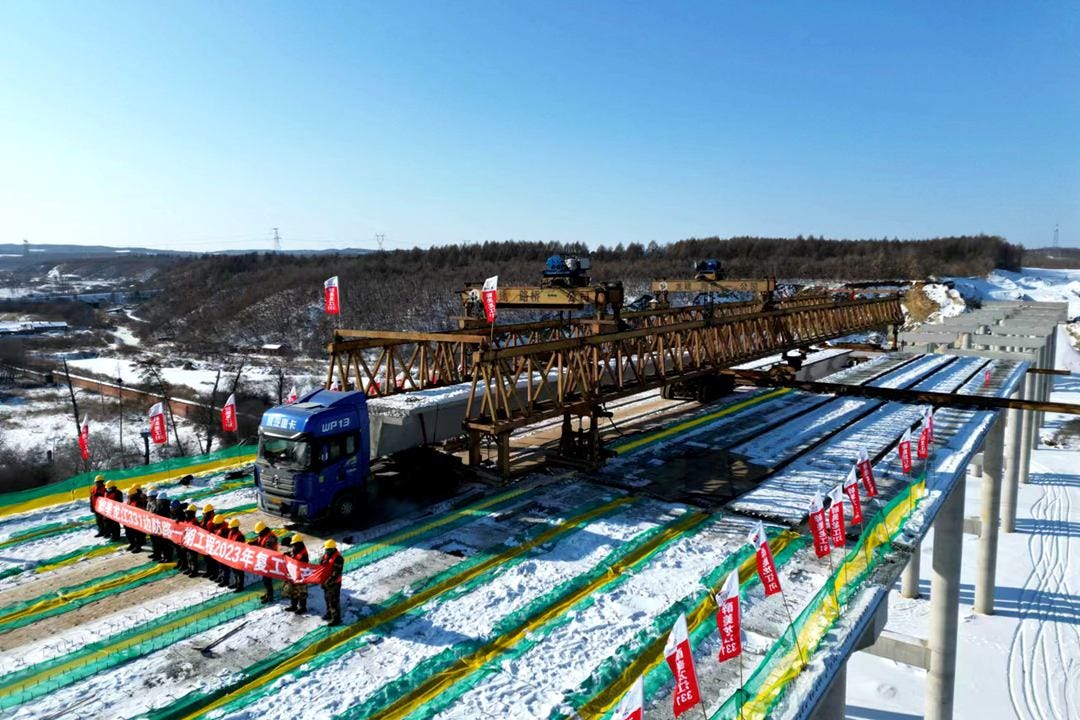Editorial: China’s Local Debt Problem Needs a Comprehensive Solution
The problem might seem mostly a fiscal and financial issue, but at a deeper level it is a matter of national governance
A highway expansion project on Feb. 16 in Heihe, Northeast China’s Heilongjiang province. Photo: VCG
In recent days, the market’s attention has been drawn to news that 12 provincial-level regions are delaying or halting some of their local infrastructure projects. This development stems from a State Council directive issued at the end of 2023, instructing the 12 regions to categorize and strengthen government investment this year. The document delineates areas for strict control over new projects, support for essential projects, and the slowing or halting of ongoing projects.
The regions — Tianjin, Inner Mongolia, Liaoning, Jilin, Heilongjiang, Guangxi, Chongqing, Guizhou, Yunnan, Gansu, Qinghai and Ningxia — are all considered high-debt risk areas. Adhering to the principle of “supporting while suppressing,” starting with the adjustment of construction projects, can quickly curb the growth of local debt and alleviate fiscal risks.
Keep reading with a 7-day free trial
Subscribe to Caixin Global China Watch to keep reading this post and get 7 days of free access to the full post archives.




